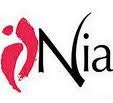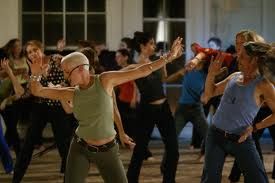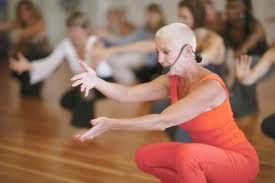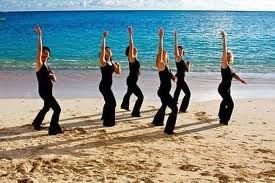ÉLETMÓDVÁLTUNK
Egy leendő életmód tanácsadó- és terapeuta saját élményei az életmódváltásról - kapcsolódó cikkekkel és gondolatokkal.
 "A test útja"
"A test útja"
The Joy of Movement Is the Secret of Fitness. Stop exercising. Start moving. Follow the pleasure principle: If it feels good, do it; if it doesn’t, stop.
Fitness Must Address the Human Being, Not Just the Body. Exercise that’s done strictly for its own physical sake, divorced from the emotions and human spirit, isn’t satisfying, isn’t fun and eventually fails. To achieve whole-being integration, you must address the whole person. Nia accomplishes this by combining several classic movement forms.
Movement Must Be Conscious, Not Habitual. Whole-being fitness begins with heightened awareness—of both body and mind. Turn off the automatic pilot that so often governs your movements and thoughts. Instead, start focusing throughout the day on all the physical sensations coursing through your body, and start moving with purpose. Stop performing conventional repetitive exercises, because they limit movement choices, reinforce robotic living and often lock in mental and spiritual blocks.
Use Your Body the Way It Was Designed to Be Used. Gain fitness by doing movements that shift your body’s own weight, with varying levels of intensity, range and speed. Replace and/or supplement jogging, jumping and lifting with stances, postures, steps, blocks and kicks that are compatible with your body’s natural structure and that feel good. These movements will burn calories; reduce body fat; create strength and muscle definition; and promote balance, grace, flexibility, endurance and good posture.
Take the Path of Least Resistance. Contrary to conventional fitness wisdom, the easy way is the natural way. We think the militaristic element often found in traditional fitness is not as effective. Psychologically, it creates resistance and insecurity rather than enthusiasm and self-respect. Physically, it creates too much strain to be worth the gain. To achieve lasting body-mind-spirit fitness on this path of least resistance, you must move in accord with the Body’s Way. Even more precisely, you must move in accord with your own Body’s Way, because no two bodies are alike.
 Function follows form, and proper function of the body is always easier to perform, and is more physically rewarding, than improper function.
Function follows form, and proper function of the body is always easier to perform, and is more physically rewarding, than improper function.
Are you or your clients ready to try Nia and follow the Body’s Way? These tips will get you started:
1. Train Yourself. Focus and direct your energy using your mind. Talk to yourself, like a personal trainer, to coach your physical body into moving more efficiently and sensing more pleasure.
2. Start Easy and Begin Small. Develop slowly and mindfully. Allow yourself the freedom to enjoy being a beginner. At first, don’t reach out, sink or rise too far. Build muscle strength and joint mobility slowly.
3. Consciously Pick Up and Place Your Feet. To protect your knees, don’t drag your feet. Instead, pick up your feet and place them in the direction you want to go.
4. Sit Back. When you lower your body, sit back as if you were sitting down in a chair, moving your buttocks back behind you and away from your knees.
5. Dress to Move. When you dance, wear anything that makes you feel free, comfortable, and excited to move.
6. Go Barefoot. Unless you need shoes for medical purposes, take off your shoes and let the bottoms of your feet send information back to your brain so your body can move safely and efficiently. In Nia, we call the feet “the hands that touch the earth.”
7. Express Yourself. Make the movements an expression of you—this is your workout. Express your own unique rhythm and body language. Be jazzy, luscious, lyrical, snappy or sensual. Most of all, be yourself and  have fun.
have fun.
8. Belly-Breathe. When you inhale, smell the moment, and feel your belly expand, then your ribs and chest filling. Exhale, placing the tip of your tongue directly behind your top teeth, which naturally supports belly breathing.
9. Use Your Whole Body. Connect with every part of your body, and move as if your body were your ballroom partner.
10. Balance Your Fitness Program. Combine a good diet with internal and external exercises. With enough sleep, proper nutrition, and exercise, you will see and feel results far beyond the shape of your body.
Sensing precisely how you feel at any given moment during a Nia movement is a superb way to become your own best teacher. Your senses will tell you exactly how to move; you just need to know what to “sense” for. As you practice, you’ll be sensing for all five of the components of movement:
- Strength is sensed as energy moving inward, a squeezing in or packing of energy against bones; it is the physical sensation of containing and sustaining power. Dynamic strength—the perfect balance of power and grace—is sensed as relaxation, not tension.
- Flexibility is sensed as energy moving outward and is the physical feeling of releasing power. Dynamic flexibility—the perfect balance of contraction and release—is sensed as opening and lengthening.
- Agility is sensed as a shifting of dynamic tension, the ability to easily start and stop movement; it is the physical feeling of pulling and pushing. Dynamic agility—the perfect balance of movement and stillness—is sensed as a balance between yin and yang.
- Mobility is sensed as energy in constant motion, moving all around and generally within a range of motion that varies slightly; it is the physical feeling of juggling power and creates a sensation of continuous energy flow and excitation of the nerves around the joints. Dynamic mobility—the perfect balance of excitation and relaxation—is sensed as youthful freedom.
- Stability is sensed as energy moving from the center and out in all directions; it is the physical feeling of harmony and peace, combined with readiness for action. Dynamic stability—the perfect balance of all the sensations—is sensed as powerful peace.
As you start moving, first recognize the unique sensation of each of the five movement components. Keep moving to sustain each sensation with dynamic ease. Finally, keep moving and energetically balance the flow of all five sensations by consciously self-initiating their on and off buttons. Welcome to the Body’s Way.
Both huddling near the back of the Nia class, moving tentatively and with pain, Janet and Laura seemed to have such different problems.
Janet was an elite athlete, a star volleyball player on her college team, but she was suffering from a rupture of her knee’s anterior cruciate ligament—the dreaded ACL tear.
Laura was a midlife bank teller with sore feet and legs.
They looked so different. They moved so differently. Nonetheless, they both had the same essential problem: They had violated the Body’s Way and were now paying the price.
Janet was known for her spectacular leaping ability. Her coaches were delighted with the way she’d learned to jump:
like a guy. She usually landed with her knees bent, as men generally do, instead of landing relatively straight legged, as most women tend to do.
Problem, though: Janet was not a guy. As a woman, she had a wider pelvis than men. Because of this, the connective tissues in her knees were less able to withstand the intense stretching of a bent-knee landing than are the legs of most men. Therefore, the same movements that were successful for males had been disastrous for her.
Janet had come to a Nia class because she knew that the most successful new form of physical therapy for women with ACL tears is neuromuscular training. Nia not only builds muscle strength but also heightens the feedback mechanisms of muscles, nerves and joints.
Laura, the bank teller, had
the far more subtle problem of feet and leg pain. Almost every day at work she experienced so much pain that she became exhausted, irritable and unfocused. Like Janet, she had thought she was using her body properly. Every day she stood erect, with her knees locked for added stability.
But Laura had not been listening to the “voice” of her knees. That voice would have told her, “I’m not meant to be locked tightly while you stand for long hours. I’m a hinge joint, and my shape dictates the type of use I’m meant for—agile movements.” By locking her knees, Laura had actually been weakening her knee joints and blocking the energy that naturally traveled up from her feet to her torso. When that had occurred, day after day, her entire body, and especially her legs, had
become excessively fatigued and increasingly weak.
During the next few classes, we taught Laura how to distribute her weight onto her feet more evenly. She learned to place weight on the entirety of each foot—the inside and outside, the front and back, the ball and heel—and how to keep her knees loose and spring loaded, not locked but ready for action, which increases flexibility and mobility.
It took time for Laura to fully integrate a new way of standing into her body’s somatic memory, or muscle memory. It took even longer for Janet to learn how to jump without straining her tendons and ligaments. However, when these two women did master their goals, their lives improved. Laura no longer lived in pain, and Janet no longer lived in fear of another crippling injury. That is the power of the Body’s Way.
http://www.ideafit.com/fitness-library/nia-bodys-way
Honlapkészítés ingyen:
Ez a weblapszerkesztő alkalmas
ingyen weboldal,
ingyen honlap készítés...
Mai: 4
Tegnapi: 2
Heti: 4
Havi: 10
Össz.: 6 264
Látogatottság növelés
ÉLETMÓDVÁLTUNK - © 2008 - 2025 - eletmodvaltunk.hupont.hu
